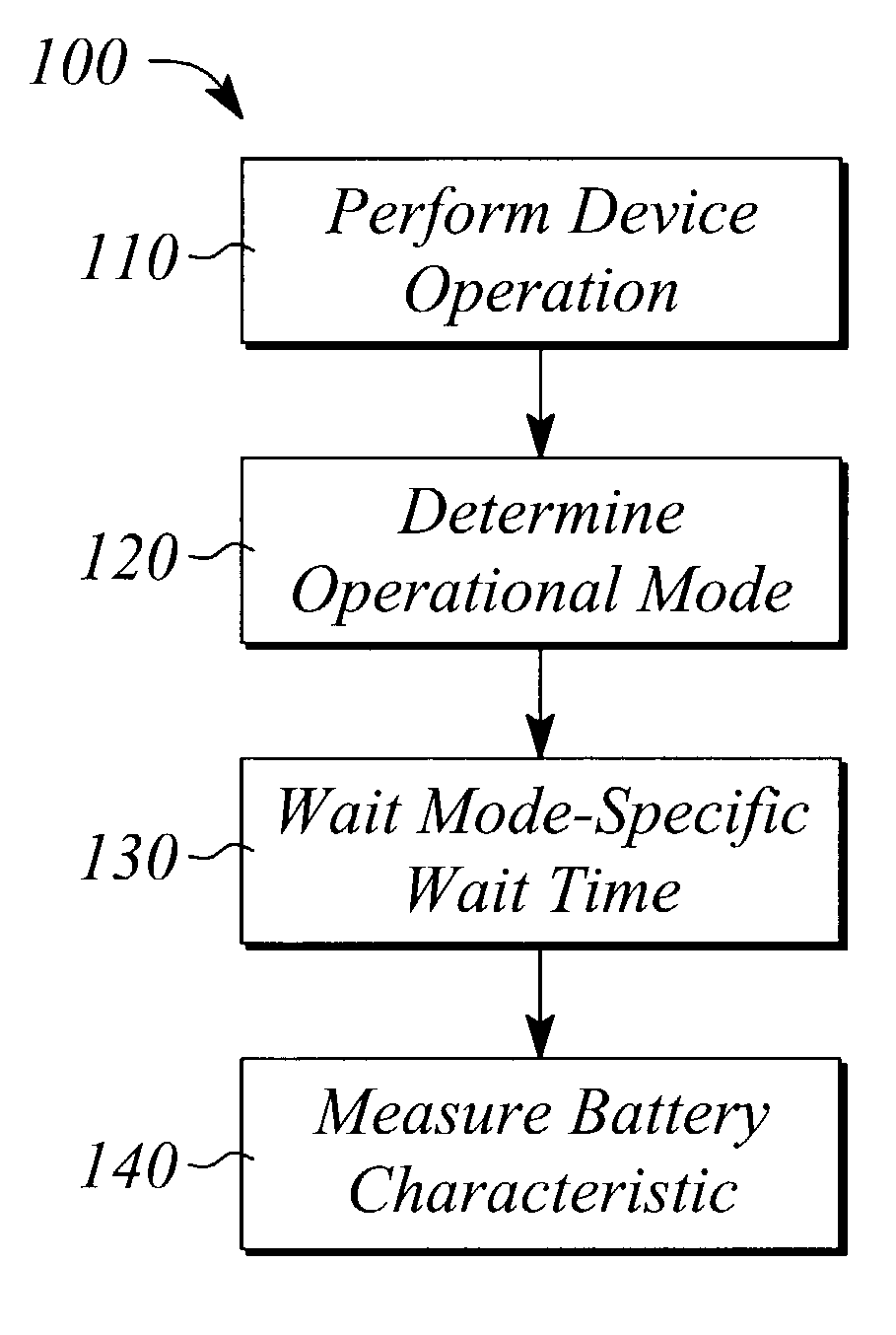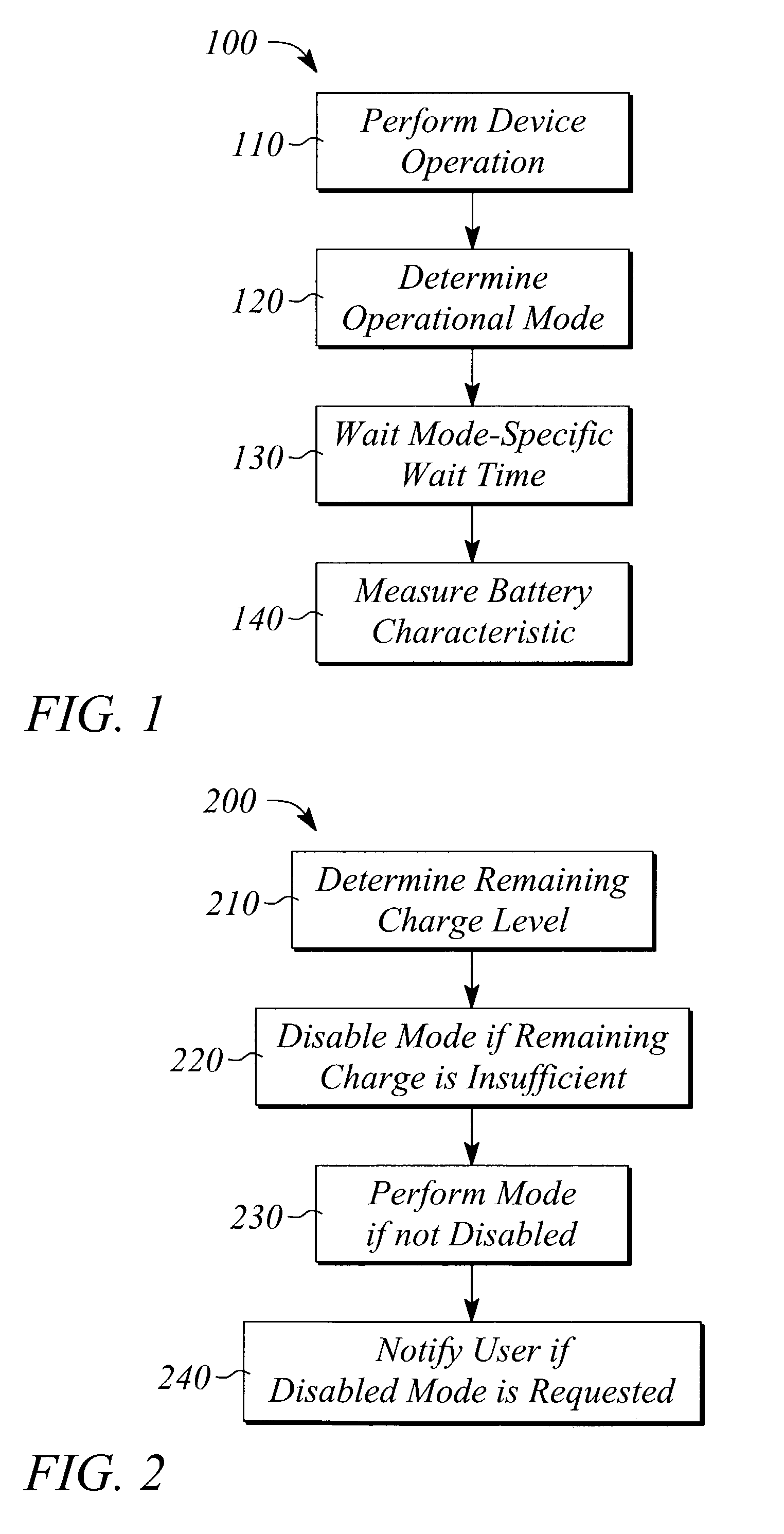Operational mode-based battery monitoring for a battery-powered electronic device
a battery-powered electronic device and operation mode technology, which is applied in the field of battery-powered electronic devices, can solve the problems of unnecessarily premature indication of effective end-of-charge life, unfavorable battery recovery, and effective artificial reduction of apparent charge life of a given set of batteries, so as to reduce the deleterious effect of battery recovery on charge measurement accuracy, accurate estimation of remaining charge of batteries, and accurate measurement of charge remaining
- Summary
- Abstract
- Description
- Claims
- Application Information
AI Technical Summary
Benefits of technology
Problems solved by technology
Method used
Image
Examples
Embodiment Construction
[0024]FIG. 1 illustrates a flow chart of a method 100 of mode-base battery monitoring. The method 100 of mode-based battery monitoring determines a remaining charge level of or a remaining energy level in a battery used in an electronic device. The method of mode-based monitoring comprises performing 110 an operation or action of the electronic device. The operation may be any of a plurality of operations normally performed by the device. For example, in a digital camera, the operations may include, but are not limited to, capturing or recording an image, displaying an image on an image display of the camera, downloading image files from the camera to an external device, such as a personal computer (PC), and changing a zoom position of a zoom lens. In a portable compact disk (CD) player, the operations may include, but are not limited to, ‘play’, ‘pause’, ‘load CD’, and ‘eject CD’.
[0025]The method 100 further comprises determining 120 an operational mode associated with the performe...
PUM
 Login to View More
Login to View More Abstract
Description
Claims
Application Information
 Login to View More
Login to View More - R&D
- Intellectual Property
- Life Sciences
- Materials
- Tech Scout
- Unparalleled Data Quality
- Higher Quality Content
- 60% Fewer Hallucinations
Browse by: Latest US Patents, China's latest patents, Technical Efficacy Thesaurus, Application Domain, Technology Topic, Popular Technical Reports.
© 2025 PatSnap. All rights reserved.Legal|Privacy policy|Modern Slavery Act Transparency Statement|Sitemap|About US| Contact US: help@patsnap.com



